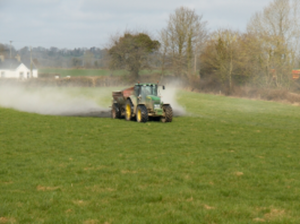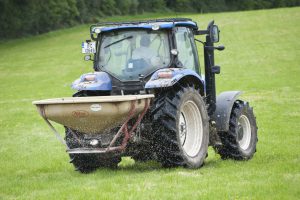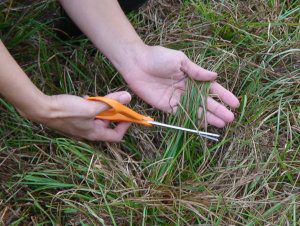Now is the time to begin preparing your pasture for spring green-up. Pastures have been through flooding from hurricanes and multiple hard freezes this winter which will affect its ability to grow this spring. Your job is to give the grass everything it needs to succeed.
Soil Tests
Plants require 17 nutrients for optimum growth, how do we know what our soils can provide? Soil tests are an inexpensive and easy way to tell exactly what needs to be added to soil to allow for plant growth. UF extension offices will conduct a soil pH test for free or for a complete analysis a sample can be sent to the UF lab for $7. Do not take just one core from your pasture, it is imperative to get a representative sample from your pastures. However, soil tests should be relatively easy to complete, Take approximately 4-5 cores at about 4-6 inches depth for each acre. Mix soil, allow to dry, and send to UF for testing. Find UF Soil Tests Here.
Liming
The soil test will indicate if lime needs to be added to the soil or not. Lime helps raise the pH of very acidic soils to satisfy the needs of our pasture grasses like bahia and bermuda which prefer a pH around 5.5-6.5. Liming also enhances fertilizer efficiency by effects solubility of elements.
Calcitic lime also supplies calcium to the soil. Dolomitic lime supplies both calcium and magnesium. Lime takes approximately 3-6 months to incorporate so it is important to apply soon in order for it to correct soil pH before spring. Follow UF recommendations in order to meet the target pH for your forage crop, too high a pH can be detrimental to plant growth.
Fertilizing
Fertilization is a quick and easy way to add macro and micro-nutrients to the soil. A soil test will indicate if micro-nutrients are necessary. Macro-nutrients, primarily Nitrogen (N), Phosphorus (P), and Potassium (K), are often what are applied during fertilization. Recommendations made after conducting a soil test is the best way to tell exactly what your soils need. Applying more fertilizer than recommended can increase costs but will not increase nutrients available. Florida’s sandy soils cannot store excess nutrients. Plan out fertilizer application carefully. Applying too close to a large rain event can wash away fertilizer or applying too much fertilizer at one time can scorch plants. Apply fertilizer when cool season forages are no longer active and warm season forages are starting to green up.
Tissue Test
Studies have shown that a soil test is not sufficient in determining phosphorus needs therefore you need to submit a tissue test as well. Bahiagrass is the only forage species that will require a tissue test in order to receive phosphorus recommendations. You should take a tissue sample once grass has had time to regrow to 4-6 inches. Learn about Plant Tissue Testing Here.
Your Pasture
Your pasture is unique and every situation is different including available budget, farm management style, animals grazing, etc. Be sure to choose a fertilizer/lime application that fits your needs and goals. Most of all it is important to follow recommendations and not over-apply nutrients that could cause future problems.
Read More
Fertilizing and Liming Forage Crops
Getting the Most out of Bahiagrass Fertilization
Standardized Fertilization Recommendations
Dealing with High Fertilizer Costs
Nutrient Cycling in Grazed Pastures
 0
0





